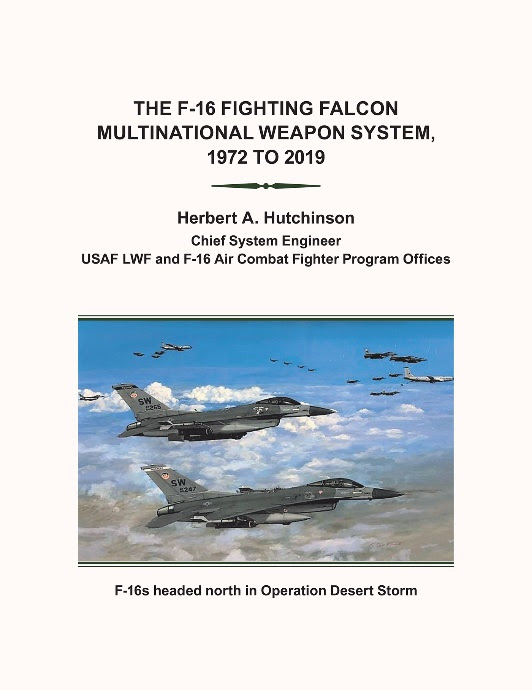The F-16 Fighting Falcon also known as the Viper is one of the best fighter aircraft in military aviation history. In Herbert A. Hutchinson’s book, “The F-16 Fighting Falcon Multinational Weapon System, 1972 to 2019,” he illustrates the unconventional process of creating one of the major United States Air Force weapon systems that he also had the pleasure to work on. Hutchinson’s years of experience are eloquently peppered throughout his book giving readers a glimpse into the creation and development of this captivating system. His book also shares inside information and decisions that were made for the YF-16 and F-16 fighter aircraft.

Hutchinson’s new book is a sequel to his debut book, “Inside History of the USAF Lightweight Fighters, 1900 to 1975.” Both books were timed to commemorate the 50th anniversary of the establishment of the General Dynamics Model 401 configuration in 1970. The design concept, “As the twig is bent, so shall the tree grow,” can be seen throughout his two books. This metaphor was the driving force behind the development of the F-16 weapon system inventory of 26 nations. He factually portrays the unprecedented technology risks and significant events that occurred as the design team and test team were defining and testing the tactical “combat relevant” capabilities of the advanced technologies weapon system. Hutchinson pays special tribute to the pilots and the ground crew members who proved the lethality and effectiveness of the multinational F-16 as it safely accomplished many thousands of hazardous coalition missions in several wars during this time.
“My two books will hopefully provide valuable advice and inspiration to all young students who are planning their continued education and future career paths in science and engineering,” Hutchinson said. “The books are accompanied by many photographs, diagrams and copies of the actual correspondence documents to illustrate the unique development trail of the aircraft regarded by aviation historians as the world’s best fourth-generation fighter aircraft.”
From the factual data, events, and accounts presented in Hutchinson’s newest book, readers will gain a much better appreciation of the teamwork that is essential in each new military weapon system or each new commercial aircraft development process. Hutchinson describes, “Without teamwork, the end product will have about the same strength as a concrete mix without water. “
“The F-16 Fighting Falcon Multinational Weapon System, 1972 to 2019” By Herbert A. Hutchinson
Available at the Xlibris Online Bookstore, Amazon and Barnes & Noble
About the author
Herbert A. Hutchinson dedicated his career to aeronautical engineering spanning over 40 years. He served as an officer in the US Army in the Korean War where his career as an engineer first began. Hutchinson’s roles included being a Wind Tunnel Test Engineer, an Aerodynamicist at Republic Aviation in New York and a Flight Test Performance Engineer at General Dynamics in Texas. Hutchinson also was a Chief System Engineer for several USAF Weapons Systems, including the USAF Lightweight Fighter Program and the USAF F-16 Fighting Falcon Multinational Weapon System, which is where he pulls the key information for the two books he has published, “Inside History of the USAF Lightweight Fighters, 1900 to 1975” and “The F-16 Fighting Falcon Multinational Weapon System, 1972 to 2019.” He has served as the USAF Representative on several US Presidential Advisory Committees and USAF aircraft major accident and incident investigations. The final 13 years of his career were as a Manager of System Engineering at the Northrop Aircraft Division in California for a joint NATO Fighter Aircraft design with the Dornier Company in Germany, for the Tri-Service Standoff Attack Missile and the Northrop YF-23 Advanced Tactical Fighter stealth prototype.


